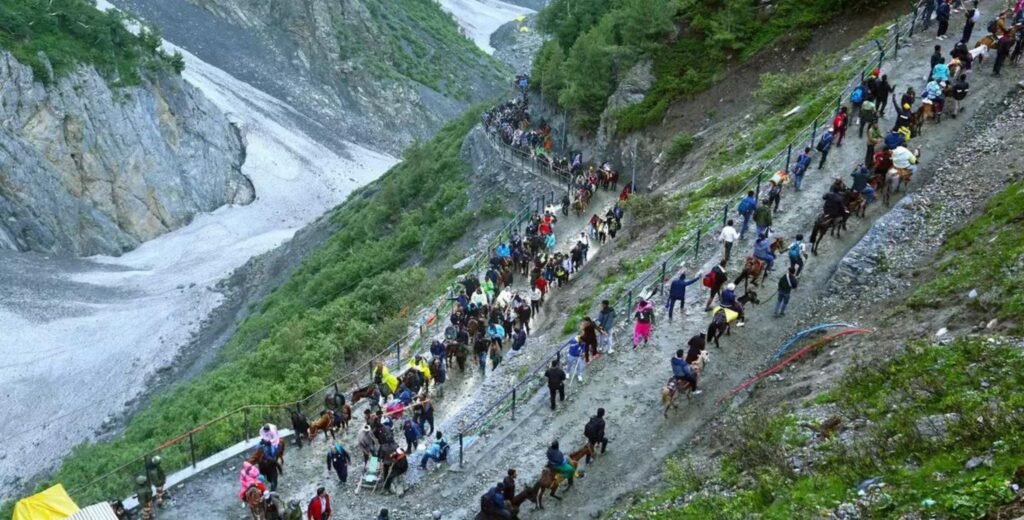The Amarnath Yatra is a spiritual trip firmly ingrained in millions of Hindus’ faith and devotion worldwide. It is more than merely a pilgrimage.
One of the holiest places in Hinduism, the Amarnath Cave is nestled among the majestic Himalayan mountains in Jammu and Kashmir.
Inside the cave is an ice lingam that is thought to depict Lord Shiva. Devotees make the difficult trek each year to honor Lord Shiva and ask for his blessings.
One of the more demanding treks is the Shri Amarnath Yatra registration, which can be particularly tough for young children and older people due to the chilly weather.
Before, during, and after the Yatra, there are a few things that Yatris needs to be aware of to have a good and meaningful spiritual trip.
The Cultural Richness of the Amarnath Yatra
1. The Legend of Amarnath Mandir
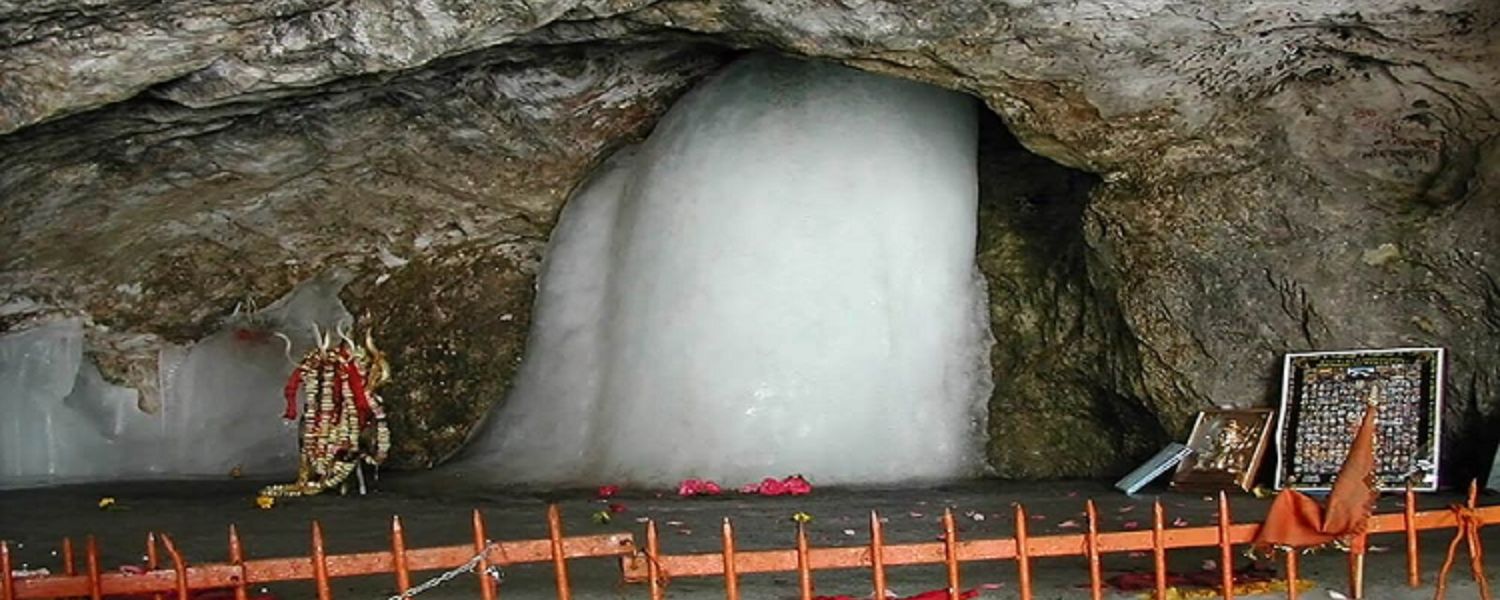
In Hindu mythology, the tale of the Amarnath Temple, one of the renowned Temples in Jammu & Kashmir, is highly well-known.
Amarnath, which refers to Lord Shiva, is derived from the words “Amar,” which means immortal, and “Nath,” which means Lord.
The mythology states that Lord Shiva’s wife, Goddess Parvati, questioned him about the keys to eternal life. Goddess Parvati persisted repeatedly till Lord Shiva gave in and revealed the mysteries.
Lord Shiva decided to travel to a more remote location that was only accessible by the gods since he did not want anyone else to know the secrets.
In search of the ideal location, they ventured through Kashmir’s valleys and left behind their old home, the Kailash.
But it’s thought that Lord Shiva left his possessions behind on the route to the Amarnath Cave because he didn’t want anybody else to discover the keys to eternal life.
At Pahalgam, he left his car, Nandi, the Bull; at Chandanwari, he left the moon from the traffic jams; and along the banks of Sheshnag Lake in Kashmir, he left the snake around his neck.
They also departed from the Mahaganesh Parvat with their son, Lord Ganesha.
Panchtarini is located on the route to the Amarnath Cave, which serves as a drop-off station for pilgrims who have reservations for the Amarnath helicopter.
Lord Shiva left behind the five elements of nature—earth, water, air, fire, and sky—at this location.
2. Facts About The Amarnath Temple
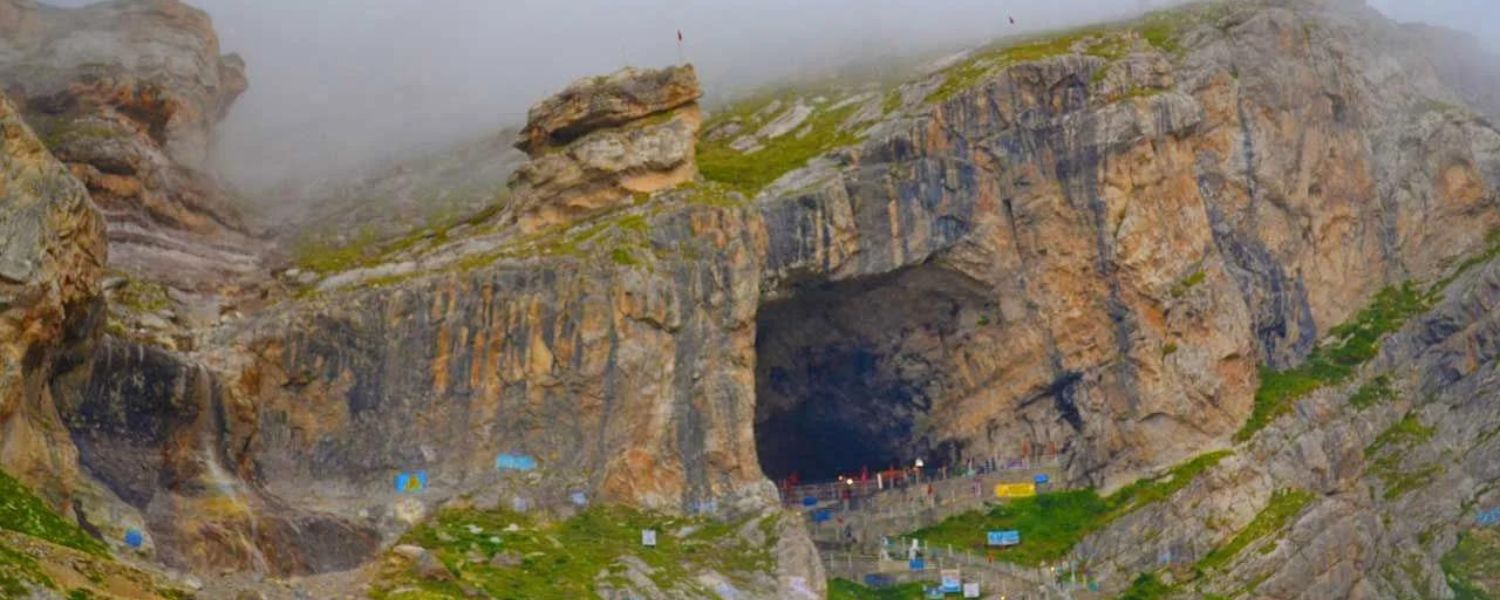
The Amarnath Yatra is in the Anantnag district of Jammu and Kashmir, nestled in the south Kashmir Himalayas. Visitors can access the temple via two main routes: Pahalgam and Baltal.
The temple is located at an impressive altitude of 3,888m (12,756 feet) above sea level, where the sacred Amarnath Cave is found.
The Amarnath Yatra Jammu Kashmir Monuments, a revered pilgrimage, typically occurs from late June to August during the Hindu month of Shravan, lasting around 45 days.
The pilgrimage is only accessible during July and August, aligning with the Shravan month. The primary starting points for the trek are Pahalgam and Baltal.
3. Reasons To Visit Amarnath Temple
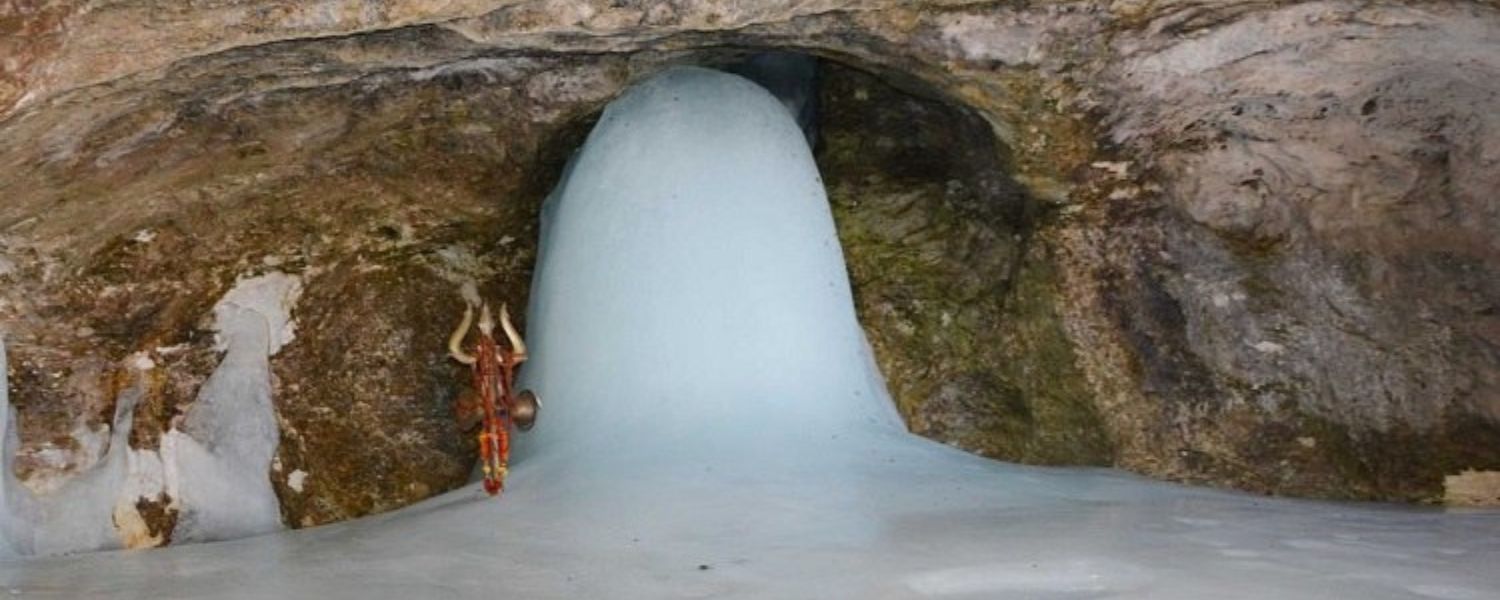
A. Swayanbhu Lingam
It is said that the Shiv Lingam at the Amarnath Yatra “self-manifested.” In the winter months of Kashmir, droplets of water that fall from the cave’s roof freeze and form the lingam, a naturally occurring stalagmite. As a result, an ice formation revered as a lingam began to rise upward. Two smaller stalagmites are thought to symbolize Lord Ganesh and Lady Parvati. Tourists swarm the Amarnath Yatra to see this special Shiv Lingam.
B. Spiritual Magic
The moon’s phases are said to influence the size of the ice lingam. This is just another unusual occurrence that draws visitors to the revered Amarnath Yatra.
C. Services provided by langars
Along the way to Amarnath Yatra, several groups put up langars, or free communal kitchens, where pilgrims can get food and beverages. These langars are evidence of the hospitality and sense of togetherness that characterize the Yatra.
D. Amarnath Temple’s Seasonal Allure
The ice lingam, representing Lord Shiva, forms in the winter and melts at the end of the summer. This natural cycle symbolizes the transience of life and draws thousands of people for a brief, holy trip, signifying its special spiritual significance.
E. Ecological Sensitivity
The surrounding area is particularly vulnerable to changes brought about by human activity and climate change. Measures, such as controlled pilgrimage numbers and stringent waste management regulations, are in place to guarantee that the pilgrimage has the least possible negative environmental impact.
4. Registration for Amarnath Yatra 2024
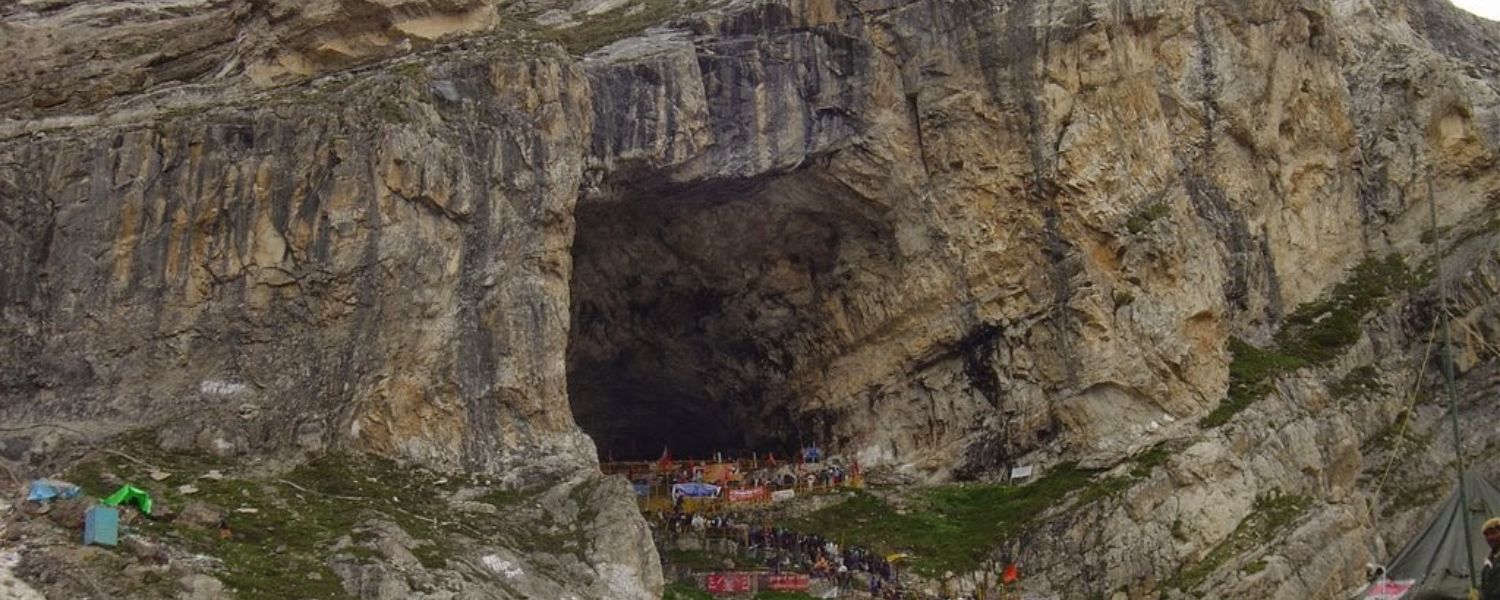
The Amarnath Yatra registrations for 2024 will begin on April 17 and can be completed at 446 designated branches of Punjab National Bank, Jammu and Kashmir Bank, and YES Bank.
Each route to the Amarnath Yatra can accommodate 7,500 visitors, totaling 15,000 pilgrims per day.
This arrangement includes walking and helicopter services to manage crowding in the Amarnath Yatra area effectively. Eligibility for the pilgrimage is open to individuals aged between 13 and 75 years.
However, women more than six weeks pregnant are excluded to ensure safety given the challenging conditions at Amarnath Yatra.
To register, pilgrims must submit a completed application form and a Compulsory Health Certificate (CHC) issued by an authorized medical institution or doctor, with a list of approved providers on the SASB website.
Amarnath Yatra 2024 registration at the designated bank branches typically occurs between 3 and 6 p.m., but this should be confirmed locally.
At the registration center, pilgrims must present the completed application form, a current CHC, and four passport-sized photos.
The Yatra Permit will feature different colors daily and by route, aiding in effective pilgrim management and allocation.
Festivals in Jammu & Kashmir may also affect the registration process, so checking local schedules is advised.
5. How to Reach Amarnath Mandir
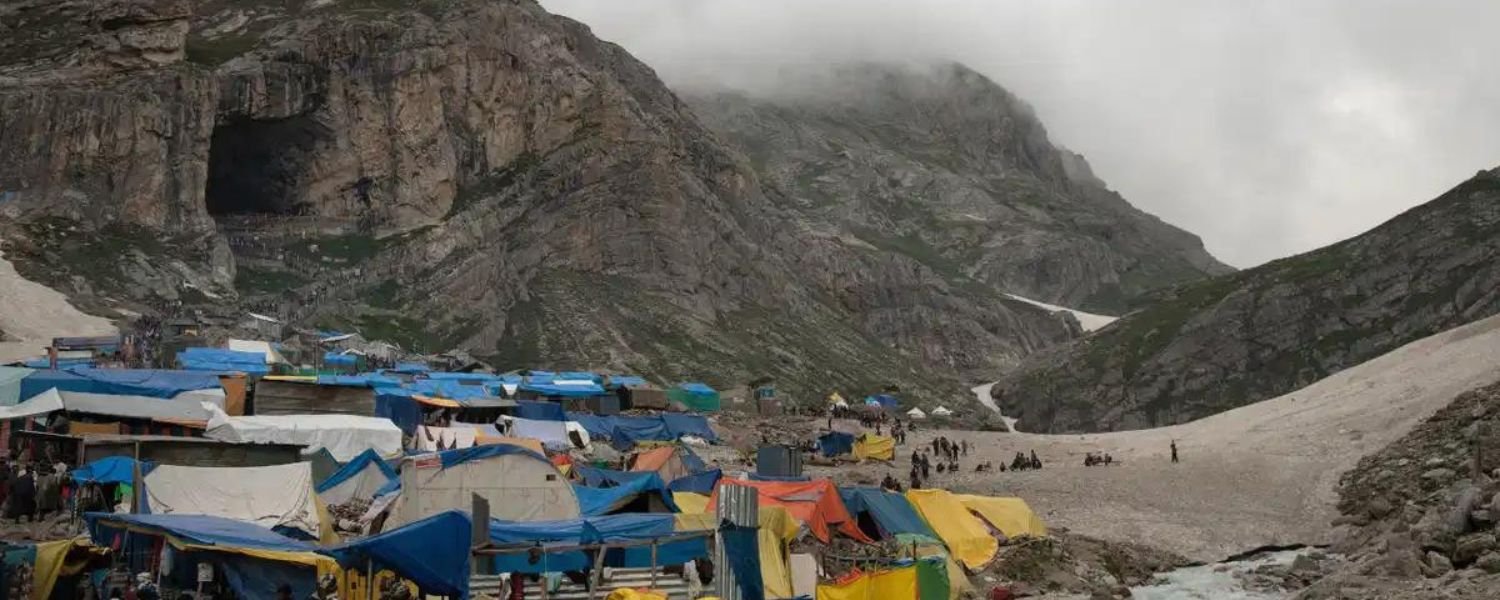
A. How to take a plane to Amarnath
Pahalgam and the Srinagar airport, one of the major airports in Jammu and Kashmir, are roughly 70 kilometers apart.
You can travel to Pahalgam, where you start your journey to Amarnath Yatra, using the government-run bus service or by hailing a private taxi.
Hans and other primary helicopter services operate between Amarnath and Baltal near Pahalgam.
B. How to travel by road to Amarnath
Due to its highly hazardous location, Amarnath Yatra needs better road access. After traveling to Jammu, one must take the road to Srinagar before continuing to Baltal or Pahalgam.
The easiest yet somewhat challenging walk to reach Amarnath is from Baltal. The Pahalgam walk is more extended, safer overall, and better suited for older hikers and families.
In addition, people can hire palkies and ponies to help with the rugged terrain. It takes 1-2 days to hike the 15 miles to Amarnath from Baltal.
The Pahalgam route, on the other hand, is comparatively longer and requires 36–48 kilometers (3–5 days). If you’re exploring Places to Visit in Jammu, this trek to Amarnath is a notable adventure.
C. How to take a train to Amarnath
Amarnath can only be reached by train indirectly. The closest station is Jammu, which is located 178 kilometers away.
To go to Baltal or Pahalgam, one can hire a taxi from Jammu. It takes 1-2 days to hike the 15 miles to Amarnath from Baltal.
The Pahalgam route, on the other hand, is comparatively longer and requires 36–48 kilometers (3–5 days).
6. Best Time To Visit The Amarnath Temple
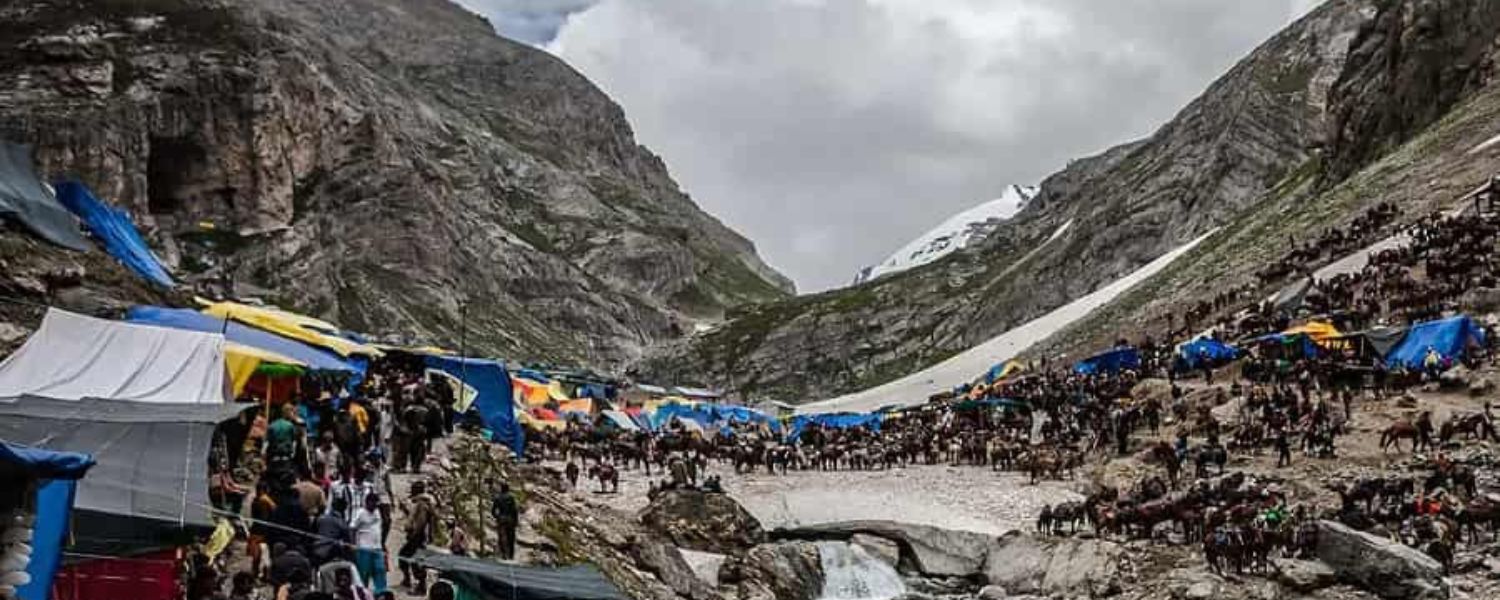
A. Amarnath Temperature by Day
During the Yatra, pilgrims will find a reasonably comfortable temperature range of 15°C to 20°C (59°F to 68°F) as they make their way along the trail leading to the Amarnath Cave.
However, the intense light at high altitudes requires proper sun protection, even on warm days.
B. The Amarnath area has frigid evenings
With lows frequently falling below freezing. This is especially true in the neighborhoods nearest to the Amarnath Cave.
Pilgrims ought to get ready for chilly nights. For pilgrims, night time temperatures are predicted to be between -5°C and five °C (23°F and 41°F).
C. Early in the season (late June to early July)
The temperature is lower, and there is a greater chance of snowfall on the hiking routes, particularly in the regions closest to the Amarnath Cave.
D. Mid-Season (July)
Although unexpected downpours are still possible, this time of year often has the most consistent weather, with milder days and bright skies.
E. Late Season (August)
The monsoon impact increases the chance of rainfall, making trekking pathways slick and raising the possibility of landslides in the area.
FAQ
Q. When does Amarnath Yatra registration start?
A. Registrations for the Amarnath Yatra 2024 begin on April 17 and can be done at designated branches of Punjab National Bank, Jammu and Kashmir Bank, and YES Bank.
Q. How many pilgrims can visit Amarnath each day?
A. Each route to the Amarnath Cave allows 7,500 pilgrims, totaling 15,000 per day.
Q. What are the age requirements for pilgrims?
A. Pilgrims must be between 13 and 75 years old. Women more than six weeks pregnant are not permitted for safety reasons.
Q. What documents are required for registration?
A. A completed application form, a Compulsory Health Certificate (CHC), and four passport-sized photos are required.
Q. How can I reach the Amarnath Temple?
A. You can reach Amarnath via Pahalgam or Baltal. The nearest airport is Srinagar, and the closest train station is Jammu. Helicopter services are also available.
Q. What is the best time to visit Amarnath?
A. The Yatra typically occurs from late June to August. Early in the season, there may be snowfall; mid-season offers mild weather; and late in the season, there is prone to rainfall and slippery paths.
Conclusion
The Amarnath Yatra is a profound pilgrimage that attracts devotees worldwide, seeking blessings from Lord Shiva at one of Hinduism’s holiest sites.
Though physically demanding due to the high altitude and unpredictable weather, the journey offers a spiritually enriching experience amidst the stunning Himalayan landscape.
Proper preparation, including obtaining necessary permits, health certificates, and appropriate gear, is essential for a safe and fulfilling pilgrimage.
With careful planning and respect for the sacred nature of the journey, pilgrims can experience the divine and timeless essence of Amarnath, making it a memorable part of their spiritual journey.
